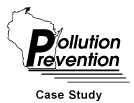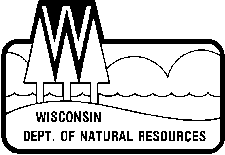
|
Hillshire Farm & Kahn's
Eliminating the Use of Freon and
Solvents |
| Standard Industrial Classification
(SIC) |
Meat processing/2013 |
| Type of Waste |
Freon 113 (1,1,2 - tri-chloro-1,2,2 -
trifluoroethane) and parts washing solution |
| Strategy |
Material substitution and process
modification |
| Company Background |
Hillshire Farm & Kahn's (HF&K)
operates several facilities across the United States. In Wisconsin, its in New London
facility employs approximately 1,200 people. HF&K processes raw meat into meat
products (i.e., sausage, bacon, ham and lunch meats). |
| Original Process |
Freon 113 was used to dissolve the fat in
meats in a diagnostic test to determine the fat/lean content of meats. A solvent-based
parts washing solution was used in the maintenance area. |
| Motivation |
HF&K's motivation was to reduce waste
disposal costs, long term disposal liability, and its regulatory burden |
| Pollution Prevention Process |
HF&K invested in a new infrared
technology for application in determining the fat/lean content of meats. The company also
purchased parts washing equipment with a filtration system and converted to a
non-hazardous (citrene-based) cleaning solution for the equipment. |
| Material/Energy Balance |
Original Process
Feedstock
- Freon TF
- solvent-based solution for parts washing
Waste
- hazardous waste and Volatile Organic Compound (VOC) air emissions
- hazardous waste
Disposal
- solvent reclamation/fuel blending
- solvent reclamation/fuel blending
Pollution Prevention Process
Feedstock
- new infrared technology
- non-hazardous cleaning solution
Waste
- none
- non-hazardous oil waste
Disposal
- none
- waste-oil recycling
|
| Economics |
Capital Costs
HF&K purchased infrared technology equipment and a parts washer.Operation/Maintenance Costs
The new infrared technology costs $1,000/year for light bulb replacement. The parts washer
costs approximately $1,200/year for purchase of the non-hazardous cleaning solution and
filters.
Payback Period
Capital costs for the infrared technology were recovered in two years. The costs for the
parts washer were recovered in less than one year. |
| Benefits |
Benefits include: cost savings, improved
employee safety, less regulatory burden and benefits to the environment. |
| Obstacles |
Obstacles include: employee resistance,
monitoring test quality and dependability. |
| Technology Transfer |
The technologies applied at Hillshire Farms
are commercially available and could be applied in similar situations. |
| Other Pollution Prevention
Activities |
The company has adopted several strategies
to reduce its solid waste. The following is a description of these activities. HF&K
eliminated open burning of non-reusable pallets by contracting with a pallet supplier who
uses the pallets for repair and boiler fuel. A shredder and baler were purchased to
initiate corrugated cardboard recycling which reduced landfill waste by nearly 50 percent.
This resulted in savings of $70,000 in the first year with equipment costs being recovered
in less than one year. HF&K also eliminated nine tons of waste to landfill per month
by working with a mill willing to accept Hillshire's label backing which is difficult to
recycle. The company also developed two programs to extend the usable brine life in meat
cooling processes from 24 hours to 168 hours. This eliminated approximately 5,500 pounds
of sodium chloride discharges per week. |
| Company Address |
Hillshire Farm
P.O. Box 227
New London, Wisconsin 54961 |
| Contact Person |
Greg Ehrle
414/982-2611 |
| Pollution Prevention Resources |
Free, On-site Technical Assistance
University of Wisconsin Extension
Solid and Hazardous Waste Education Center
Milwaukee area: 414/475-2845
Remainder of state: 608/262-0385Pollution Prevention
Information Clearinghouse
Wisconsin Department of Natural Resources
Hazardous Waste Minimization Program
608/264-8852, 608/267-9523 or 608/267-3763 |
 |
Bureau of Cooperative Environmental Assistance
Wisconsin Department of Natural Resources
P.O. Box 7921
Madison, WI 53707
608/267-9700
PUBL-TS-039 95 |
|

